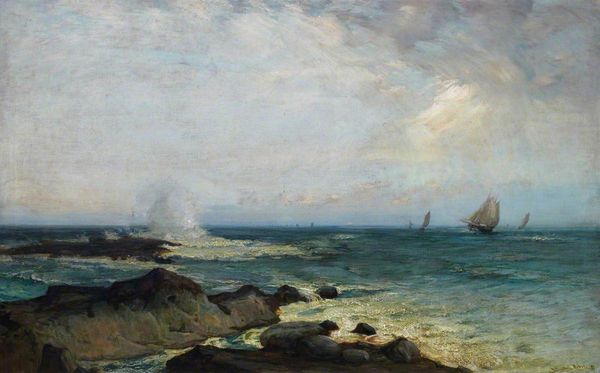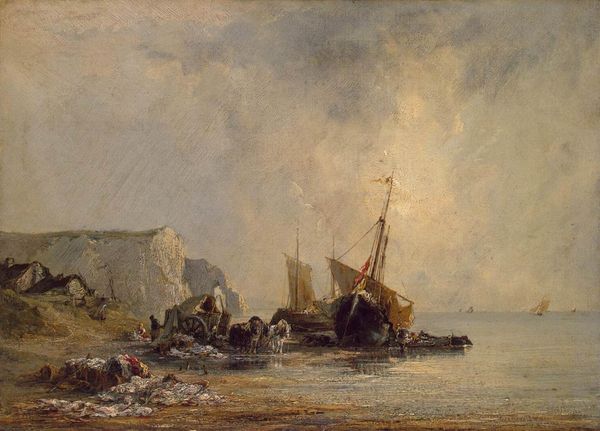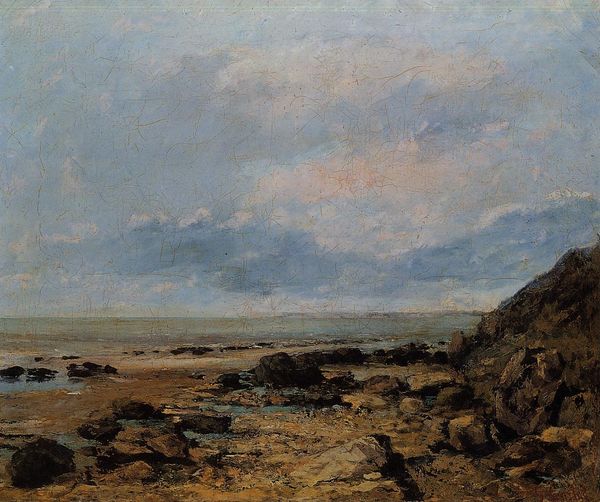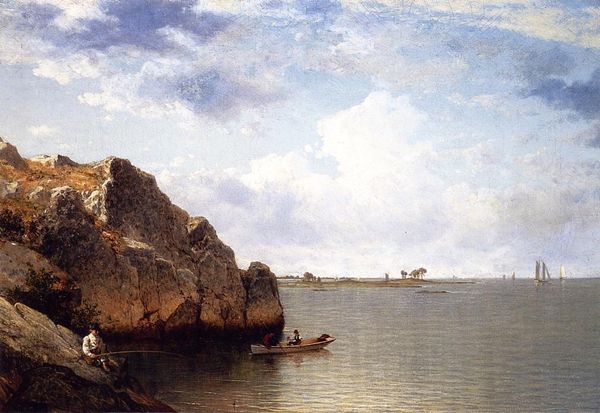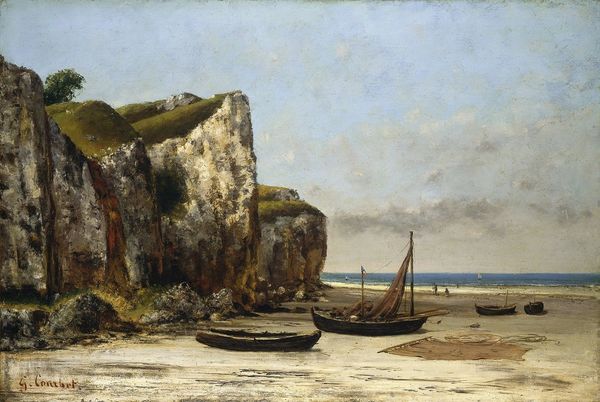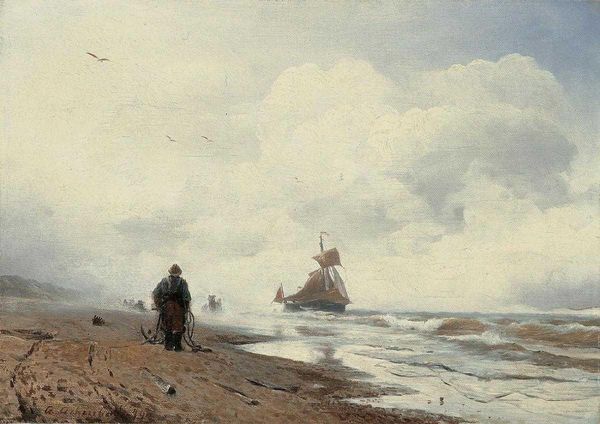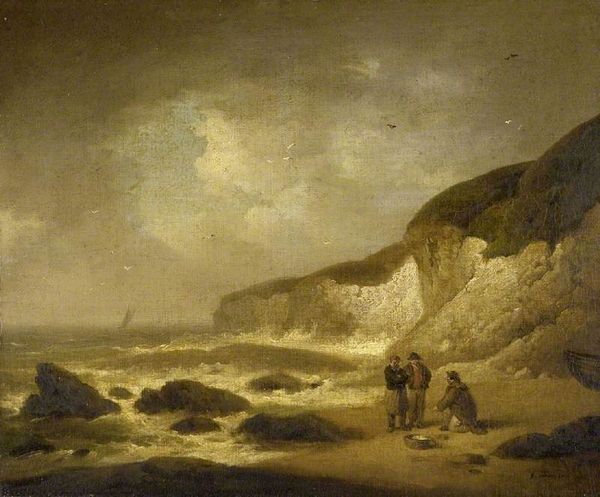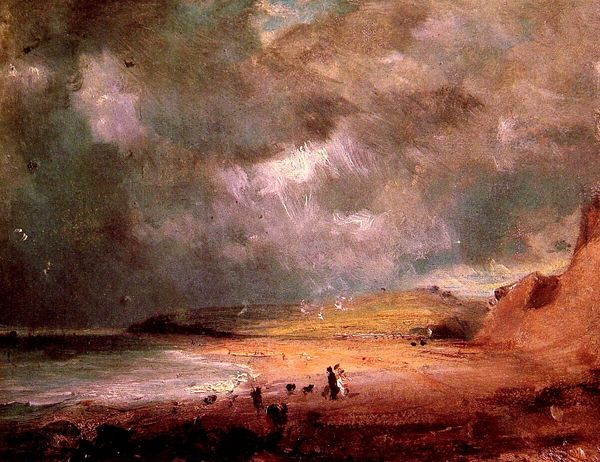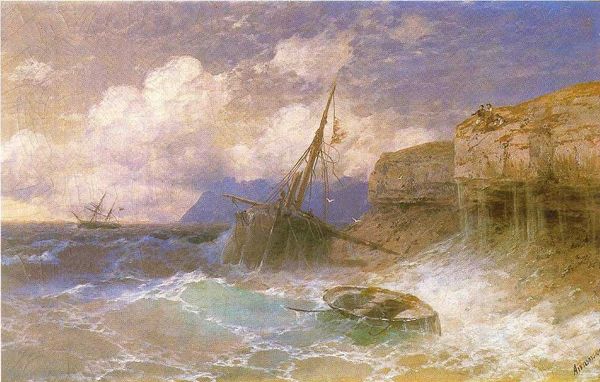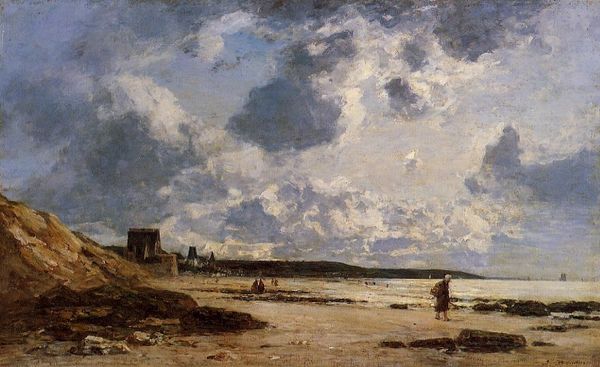
Dimensions: 53.3 x 63.5 cm
Copyright: Public domain
Editor: Jongkind's "The Sea at Etretat," painted in 1853, is striking. I'm immediately drawn to its quiet, almost melancholy mood and how the cliffs loom in the distance. How do you see the cultural context influencing a landscape like this? Curator: It's important to remember the burgeoning sense of nationalism at the time. Landscape painting, like this, became a powerful way to articulate a shared identity and celebrate one's homeland. What do you think the choice of Etretat specifically brings to this idea? Editor: Well, Etretat with its dramatic cliffs, could represent the grandeur and strength of France, perhaps? Curator: Exactly. And consider that the mid-19th century was a time of great social change, with the rise of industrialization and urbanization. Landscape painting, particularly en plein air, offered an escape, a return to nature and a celebration of the untouched beauty of the countryside. Did painting outdoors challenge artistic establishments? Editor: In a way, because painting outside directly broke with academic studio practice, emphasizing direct observation and individual experience. This aligns with broader movements towards individual expression and questioning traditional authorities in the arts. Curator: Precisely. So, how does Jongkind's work contribute to our understanding of 19th-century French society? Editor: I see how this work goes beyond just being pretty; it also participates in shaping and reflecting national identity during times of great transformation. The directness of en plein air really underscores the artist’s personal connection to this idea. Curator: And in doing so, he invites viewers to engage with these landscapes as spaces of meaning. These are reminders that art always plays a vital role in a socio-political dialogue, shaping perceptions and provoking conversations.
Comments
No comments
Be the first to comment and join the conversation on the ultimate creative platform.
